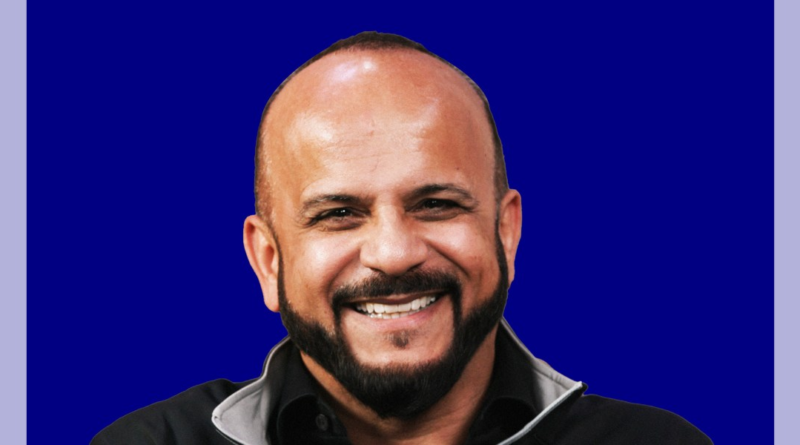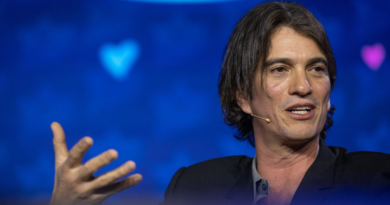How the immigrant inventor of Edible Arrangements turned a modest loan at age 17 into a multimillion-dollar business
Welcome to “How I Made My First Million,” Fortune’s newest series in which we interview today’s most powerful people about how they amassed their wealth. You’ll hear from founders, entrepreneurs, investors, and creatives across the globe on how they joined the seven-figure-club, what they’d do differently, and their best piece of advice for building wealth.
Key takeaways
- Age: 55
- Career highlights: Bolstered by the knowledge honed at his teenage job at a flower shop, created Edible (formerly known as Edible Arrangements) aimed at combining fruit baskets with floral arrangements
- Approximate valuation: $600 million
Tariq Farid knows what it’s like to start from the ground up.
As a 12-year-old, the oldest of six children, he moved with his family from Pakistan to Connecticut, where he was quickly put to work helping the family make ends meet. He worked a variety of odd jobs, including one at a flower shop, which would spur his interest in florals and—more importantly—eye-popping gifts.
Farid is an entrepreneur in the true sense of the word. Sensing his potential, his boss at the flower shop loaned him $6,000 to open a flower shop of his own. From there, he taught himself computing and information technology and was able to balance both an IT business with flowers. At age 30, with his brothers, he opened the first Edible Arrangements storefront in his local New Haven.
Farid has been bootstrapping his business since the beginning. He described an attempt to secure a bank loan of $120,000, which was rejected “because no one thought the idea was going to work.” The joke is on them; Edible, recently rebranded from Edible Arrangements, has become a sprawling international chain with thousands of franchises, millions of orders, and a suite of new category offerings, including baked goods and real flowers. And he’s kept it in the family; he recently passed the reins along to his daughter, Somia Farid Silber, who is currently Edible’s president.
The sky’s the limit for Farid as Edible nears its 25th anniversary and inches towards potential unicorn status. But he won’t be hasty: “It’s one brick at a time, and you want to have solid, steady growth,” he told Fortune’s Ruth Umoh. “To sit here at $500 million, when in the first year, we did $192,000 in sales, I’m in awe. I just want to make sure we slowly, steadily have solid growth.”
The following transcript is lightly edited for clarity.
Give us a little bit of background information about yourself. Where did you grow up? What did your parents do? How did you go down this journey?
I landed in the U.S. at 12 years old, kind of following the family. I grew up for the first 12 years in Pakistan in a farming family. My father came here a few years before us and worked as a machinist. Then he worked at Burger King, McDonald’s. In most immigrant families, everybody works. So, when I got here at 12, I had to help.
I first started delivering newspapers and cutting grass. Then I landed an amazing job at Farricielli’s Flowers in West Haven, Connecticut, with Charlie Farricielli. He was one of those neighborhood entrepreneurs who wanted to take care of all his employees. I learned a lot from him and had an opportunity to buy a flower shop that had closed for about $6,000. So my father’s boss gave me, a 17-year-old, a $6,000 loan to open a flower shop. And I always loved computers, so I started to balance an IT business with the flower business and just did phenomenally. Fast forward to 1998 or 1999, and I had this opportunity to do fruit arrangements. We started it in a small little section of our flower shop and it just took off. And here we are, thousands of stores later.
Giving $6,000 to a 17-year-old. Why?
Somebody has to ask Bill and Denise Holtberg how they made that decision. Back in 1980, $6,000 was a lot to give to a 17-year-old. But I made sure we paid that back within a year-and-a-half. When I ask him, he says, “Well, I believed you would be successful.”
The only thing I knew at that time was to work hard. I saw my father work hard. I saw my mother work hard. I really didn’t have a choice. It was not like there was a selection, even if you’re going to go to school. If you’re going to college, you had to decide if you were helping the family. Should I go or not? And that’s what happened to me with a lot of those opportunities. I’m glad I did what I did, because when the family needed help, I started working, and I learned so much. By 17, I knew how to run a business and never looked back.
Running a flower shop is pretty straightforward. How did you go from that to “Let me buy fruit, craft it, turn it into flowers, put it on skewers, and sell this as part of an arrangement?” That’s quite the pivot.
Florists are probably some of the hardest working people in the world. You have to get fresh flowers and treat them. There’s a lot involved. So, my floral training helped me prepare for the fruit part. I think that journey made it easier.
In the beginning, it was a lot of hard work. We did not have the funds. I wrote a big business plan and tried to borrow $120,000. It got rejected because no one thought the idea was going to work. So we went ahead and just bootstrapped it.
But having all that experience with flowers really helped. At the end, it’s about the customer. The first holiday was Easter in 1999, and we made 28 arrangements, and it took us all day because we had no equipment. We were hand-cutting everything. Every customer called and said, “Wow, can I order another one? This is amazing. I didn’t know you guys made this.” And we knew as soon as we saw the customer’s response that we were onto something.
At that point, there’s no looking back. You figure out how to automate and get more equipment. I made trips to China back then to try to find food-safe containers, because before that, it was all about flowers. And you couldn’t put the fruit arrangements into those containers, so we had to get our own containers. That started a whole new business for us called Berry Direct, which is where our sourcing is. And then we made a website. We started another business called Netsolace that would do all the technology and the [point of sale] systems and everything. Everything kind of just came together like an ecosystem.
You were turned down for a loan, I’m assuming a bank loan. What did that bootstrapping look like in practice? How did you get financing?
You put extra miles on the car, you negotiate with the landlord, you negotiate with the vendors. I’ll tell you, having that hunger is really good on the customer side because you really want to take care of that customer. You want them to tell 10 other people. And that’s what worked really well for us. We’re still low debt. We created a habit of living within our means.
At what point did you think to yourself, “Wow, I’ve made it”? What was that point where you got a pretty sizable check and you said to yourself, “Wow, I’m really onto something here”?
Probably when my accountant told me I owed a lot of taxes. And I’m like, “Taxes? What do I owe taxes for? I didn’t know we made that much money.” And he showed it to me and said, “Oh, you made good money here. And you reinvested it.” At that time, when I saw the first tax bill, I was like, “Oh, okay. We made it.”
But I don’t think you’re ever done because when you start, a lot of people look at it and say, “When is enough?” But when you’re focused on the customer and building a brand, it’s never necessarily about a destination. It’s about the journey. I think that’s exciting. What we see now is the opportunity. For me, the true aha moment was when somebody knocked on our door and said, “I want to buy a franchise. I want to open up one in Boston.” It’s that saying, you know, great brands are bought, never sold. So, if somebody comes to you, that means you built something and they want that. That was probably the aha moment from a brand point of view.
But from a personal point of view, it would be when you can pay the rent and not have to struggle with funds.
Obviously, financial metrics are a huge milestone for most business owners, certainly small business owners. Walk us through how you made your first million.
Our first flower shop in East Haven, Connecticut, hit $1.2 million in sales. And the day that it hit $1 million, there was a big celebration, because, back then, that was the goal for a small business owner. If you can make it to that, you can afford to hire more. You can turn it on and get into a little better location. And your brand has made it, because that’s thousands and thousands of customers who are coming in and recognizing your brand.
So, for me, you know, it wasn’t necessarily about the money. But it was that now this business is self-sustaining. Now we can move on to the next location. And I think you just have to prove one out. And if you could prove one out, then doing multiple or getting to 100 locations is not hard. I would say that million was probably the hardest journey. But once you hit that, then—I don’t remember when we hit $100 million or $200 million. I don’t think we ever stopped at that point.
The million was the hardest journey because?
Because you don’t have the means to do it. As I had mentioned earlier, I couldn’t get loans. Because when people looked at this concept of fruit and baskets, they didn’t think it was going to work. And then, the rest of it is just selling month-to-month. We were never really trying to hit a million. Even now, it’s about the quality, the delivery, and the customer experience. I think the majority of businesses that hit a million—it’s usually a surprise. But once you hit it, you know you have a great location. Now, you can go to any landlord and say, “I have a business. This is what it does in sales. I’d like to get a location.” The doors are gonna open for you.
I think that journey is hard because for us, especially, we did not have access to funds. And that has been the struggle. There will always be a struggle for startups or small businesses to get funding. As a minority, it was even harder. I think now, the biggest thing isn’t that you hit a million, it’s the feeling that you’re self-sustaining and that you can make it and share the experience with others. That’s more than achieving that milestone.
Within roughly two years of launching, you franchised your first Edible Arrangements. Was that your plan all along?
I pretended it was my plan all along. We wanted to scale, but we weren’t sure which way. When I first thought that we could get a loan, our plan was to open multiple locations. But I heard about franchising and didn’t think we could pull it off until somebody walked in.
I knew about franchising. I worked at McDonald’s, and it was one of the best jobs I ever had. Back then, when you were 15, if you did really well in school, they gave you a work permit to work. Then my father’s boss at Burger King gave me a job. So, I would actually take a one-hour bus ride from West Haven, Connecticut, to Milford. I would go after middle school. From there, I ended up going to McDonald’s and did really well. I always had that in the back of my head that there’s this concept of franchising. I didn’t understand it, I only knew the inner workings, not how you franchise a business.
But when the opportunity came, somebody walked into our store and said, “Hey, I’m in Boston and I’d love to build one of your stores. Do you offer franchises?” Of course, at that point, I was like, “Of course, we’ve been thinking about it. Let’s do it.” And we were able to pull it together real quickly. And it was probably the one of the best things we did.
Since that serendipitous day, you’ve expanded into Texas and other areas within the continental U.S. You’ve expanded globally into China, and certainly other countries. How do you determine what makes sense, in terms of expansion? And are you still looking to scale your physical footprint?
Localize innovation. But at the same time, with the whole e-commerce and this social media phenomenon, the world has shrunk. Where we may have had an opportunity of, let’s say, a couple of thousand locations in the U.S., now, it’s more like 6,000 or 7,000 locations globally with a consistent experience on the web level.
We would love edible.com to be the booking.com of gifting, where you could go anywhere in the world and send a gift. People are moving a lot, so now it’s not about countries. The experience at the store will be very different. But online, it’ll be pretty consistent. So, it’d be nice to be able to send somebody in Dubai a gift in a minute and we would love to solve for that.
In the early days—the first five years—what did sales look like? And how does that compare to now?
Pretty consistent. As entrepreneurs, you have to be prepared for the good days and the bad days and everything. We can pretty much say we’ve gone through everything, especially with what happened over the last few years. There’s a consistency to that. As long as people are celebrating, there’s always going to be a need. So, our sales have always been steady, and the objective now is to try to get our stores, most of our stores, to a million, million-something in average sales. And to customize each store where they own that neighborhood. So, that franchise owner really gets to know the neighborhood and is advertising or promoting, according to the neighbor.
With that, it’s pretty hard to have a consistent stat that every one of your stores is going to do the same. We could deliver a lot from the web level now, and we can give a pretty consistent experience. Now we’re even doing third-party. So, I think the opportunity is much bigger now than before, because you can reach so many customers. We have stores now that have 1,500, 1,600 people every day following what’s happening. As that store puts up information about, what they’re making today or which product is coming in, people place orders. I’m blown away with that. Before, you had to do mailers and send things out and invite people for samples. Now, you can really do it online, on social media, and interact with customers in real time. So, I think the potential is bigger than ever before.
I’ve seen estimates that your company is valued about $600 million. Are you eyeing $1 billion forging forward? Is that the next metric for you? Hitting that unicorn status?
Of course. [But] as entrepreneurs, there’s a different level of success. And for me, success is always the quality of something, not necessarily the quantity.
IWhen I started out and was only 18 years old, I would walk home and I wasn’t happy. And my mother was like, “What’s going on?” I’m like, “Not enough sales.” And she said, “Honey, stop chasing money. Money runs really fast. Go do the right thing. It’ll chase you.”
Making sure you take care of the customer, I don’t want to compromise that. That’s the big thing. And I think there’s a nice balance there. Even now, post-pandemic, people are looking for a nice life balance. The number of hours you work, what you want to do. I think our brand offers that. Could we achieve a billion? Yeah, but I don’t want to lose money by getting there.
There are a lot of brands that will achieve that, but then the health of the brand isn’t good. For me, the health of the brand is very, very good. And I think it’s a journey. It’s one brick at a time and you want to have solid, steady growth. To sit here at $500 million, when in the first year, we did $192,000 in sales, I’m in awe. I just want to make sure we slowly, steadily have solid growth.
Best business advice you’ve received?
The best advice I ever got was probably the first advice I ever got: Customer is the king. Always take care of the customer. Everything will work out.
Worst business advice you’ve ever received?
I would say I’ve been lucky that if I got the worst business advice, I probably haven’t followed it. I’ve been lucky enough to live within my means.




